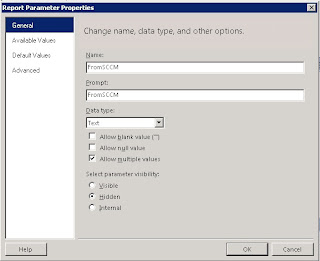

It will make it easier to manage and protect them. It’s recommended that you prepare or identify a common folder to save your custom report files.

Now click on the “ Edit as Text” link at top-left.

Click Test Connection to verify it works, then click OK.Select the SCCM database which is “CM_PS1” in my example.I prefer the FQDN, but the NetBIOS name will also work (usually). When the Connection Properties form opens, TYPE IN the SCCM SQL Server host name (do not click the drop-down or you will grow old waiting for it to browse your network).Leave the other settings as-is, and select the “ Build…” button. For this example, I used the name of the SCCM database, which is “CM_PS1”. Select “ Create a dataset” at the bottom of the New Table or Matrix form, and click Next.Choose the desired wizard (I’m using Table or Matrix Wizard for this example).IMPORTANT: Make sure you log onto the server using an account with permissions to create and view reports.Copy the SQL statement to the clipboard and proceed.Test the query until you get the results you want.(we already did this in previous posts here and here and a few others).Anyhow, the SQL Report Builder is installed with the default settings. I’m hoping this gets addressed soon, since SQL Server 2016 is the cat’s meow already. It is partly to do with the schema level buried inside the RDL report file.
#Sccm report builder download
** If you download SQL Report Builder for SQL 2016, it will look prettier, but the reports won’t import or run in SCCM 1606. It’s much easier/better/smoother to do that in SQL Management Studio than in the Report Builder. If you read any of my posts on SQL queries for SCCM, you can follow the same basic approach for the query building part. In addition, I’ve installed SQL Report Builder 3.0 for SQL Server 2008 R2 **.
#Sccm report builder windows
I’m using (long inhale….) Microsoft System Center Configuration Manager (aka SCCM) “Current Branch” build 1606, with the latest hotfixes, running on Windows Server 2012 R2 and SQL Server 2014 SP1. That would give you enough time to get to Starbucks and back before they even look back in your direction. If you’re smart, you’ll make some that include pie and bar charts with lots of spiffy colors and formatting. The goal of this exercise is to add custom reports to your Configuration Manager site so you can dazzle executives while you sneak out the door.


 0 kommentar(er)
0 kommentar(er)
